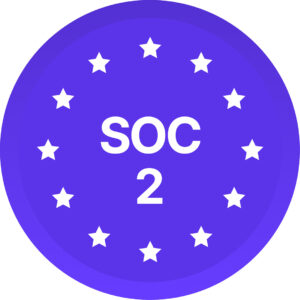Jewish Heritage Month is an important celebration in Canada every May. This month is dedicated to recognizing and honouring Jewish Canadians’ contributions to their communities and society as a whole. Despite the long history of Jews of colour, including Sephardic Jews, Indian Jews, African Jews, and Chinese Jews, many people are unaware of their existence. It is time to acknowledge and celebrate the diversity of Jewish culture and experiences and make it a part of the common Jewish narrative. This Jewish Heritage Month, we hope for increased education and exposure to reduce ignorance and promote respectful interactions with Jewish people from across the cultural and ethnic spectrum.
Since 2018, every May, Canada has celebrated Jewish Heritage Month. This important month celebrates the inspirational role that Jewish Canadians have played and continue to play in communities across the country. From law to politics to culture to sports, this important initiative celebrates Jewish Canadians’ contributions for 250 years.
But as an Angolan Santomean Cape Verdean Sephardic Jew, it has been a month that always proves empowering and othering. This initiative is meant to help showcase and celebrate Canadian Jewish communities. However, since its initiation, Ashkenazi (one of two major ancestral groups of Jewish people whose ancestors lived in France and Central and Eastern Europe, including Germany, Poland, and Russia) culture has been the overwhelming majority despite diversity having long-defined Jewish communities.
Two times out of three, when people find out that I am both African and Jewish, they are shocked. Although I know many Blewish people and other Jews of Colour, I have noticed that many people don’t realize that there are long histories of Jews of Colour in communities worldwide.
Sephardic Jews, which includes those whose ancestors lived in Spain, Portugal, North Africa, and West-South Asia, are the second major ancestral group of Jewish people.
But there are also Indian Jews such as the Bene Israel, Bnei Menashe, the Teimanim from Yemen; various African Jews, including most numerously the Beta Israel of Ethiopia; and Chinese Jews, most notably the Kaifeng Jews, as well as numerous others.
Reference: History of the Jews in India. (2023, March 15). In Wikipedia. https://en.wikipedia.org/wiki/History_of_the_Jews_in_India
Only some people know this.
The issue of interchanging race and ethnicity with religion also affects people’s comprehension of the possible existence of Jews not of European ancestry. Too often, when I share that I am Jewish, I get the shocked response, “But you’re Black?” or “But you’re African?” and I think to myself, “And what does my racialization or ethnicity have to do with my religion?”
Besides the point of various ethnicities attached to Judaism, statements like this hold heavy connotations. That Judaism is only for people racialized as white. And this is a common misconception promoted even within Jewish spaces, where the faces of Jewish stories seldom look like mine or other people of colour and where a person of colour is often assumed to be an outsider.
But just like with Islam and Christianity, Judaism has no claim to a particular ethnicity or perceived race.
- Jews of colour exist through Jewish ancestral group diversity.
- Jews of colour exist through conversion.
- Jews of colour exist through adoption.
- Jews of colour exist through interfaith marriages.
- Jews of colour exist.
And it’s about time it becomes normalized and validated.
This lack of awareness about the very existence of Jews of colour only results in ignorant and hurtful questions about our identities but also continues the erasure cycle of Jews of colour and affects our participation and presence in mainstream Jewish culture. These assumptions that Jews of colour don’t exist or aren’t real Jews can be more harmful than political or religious generalizations.
Rivka Campbell, a Black Jamaican Jew, states that even when she’s in a Jewish space wearing Jewish garb, people still sometimes default to the assumption that she isn’t Jewish because she’s black (Rose, 2021).
Jobim Novak, a Jewish Torontonian of Guatemalan descent, was once entirely rejected from dating a Jewish girl due to his ethnicity. (Rose, 2021)
Devyani Saltzman, a Toronto-based artist who is an Indian Jew, once said, “We want to belong to a common narrative.”
If we are to celebrate Canadian Jewish history, we should be celebrating it in its entirety.
I remain hopeful that increased exposure and education will reduce the questioning and perceived novelty of Jews of colour over the long term. In the meantime, I hope writing blogs like these, sharing experiences, will help teach all Jews and non-Jews how to interact respectfully with other Jewish people from across the cultural and ethnic spectrum.
This Jewish Heritage Month, I hope to see ethnic diversity be a part of the typical Jewish narrative—a part of everyone’s Jewish learning.
_________
References
Rose, A. (2021, August 30). Being a jew of colour: Finding acceptance and inclusion. The Canadian Jewish News. Retrieved April 24, 2023, from https://thecjn.ca/perspectives/being-a-jew-of-colour-finding-acceptance-and-inclusion/
This blog authored by Akira DeCarlos was originally published by Diversio EDU (formerly CCDI Consulting) in May 2023.
Our newsletter and blogs feature personal opinions and diverse viewpoints. We aim to create a safe space for our team to share their perspectives on diversity and inclusion. Please note that individual articles may not align with every reader’s view or comprehensively cover a topic. We appreciate the diversity of opinions and respect our team’s contributions.

